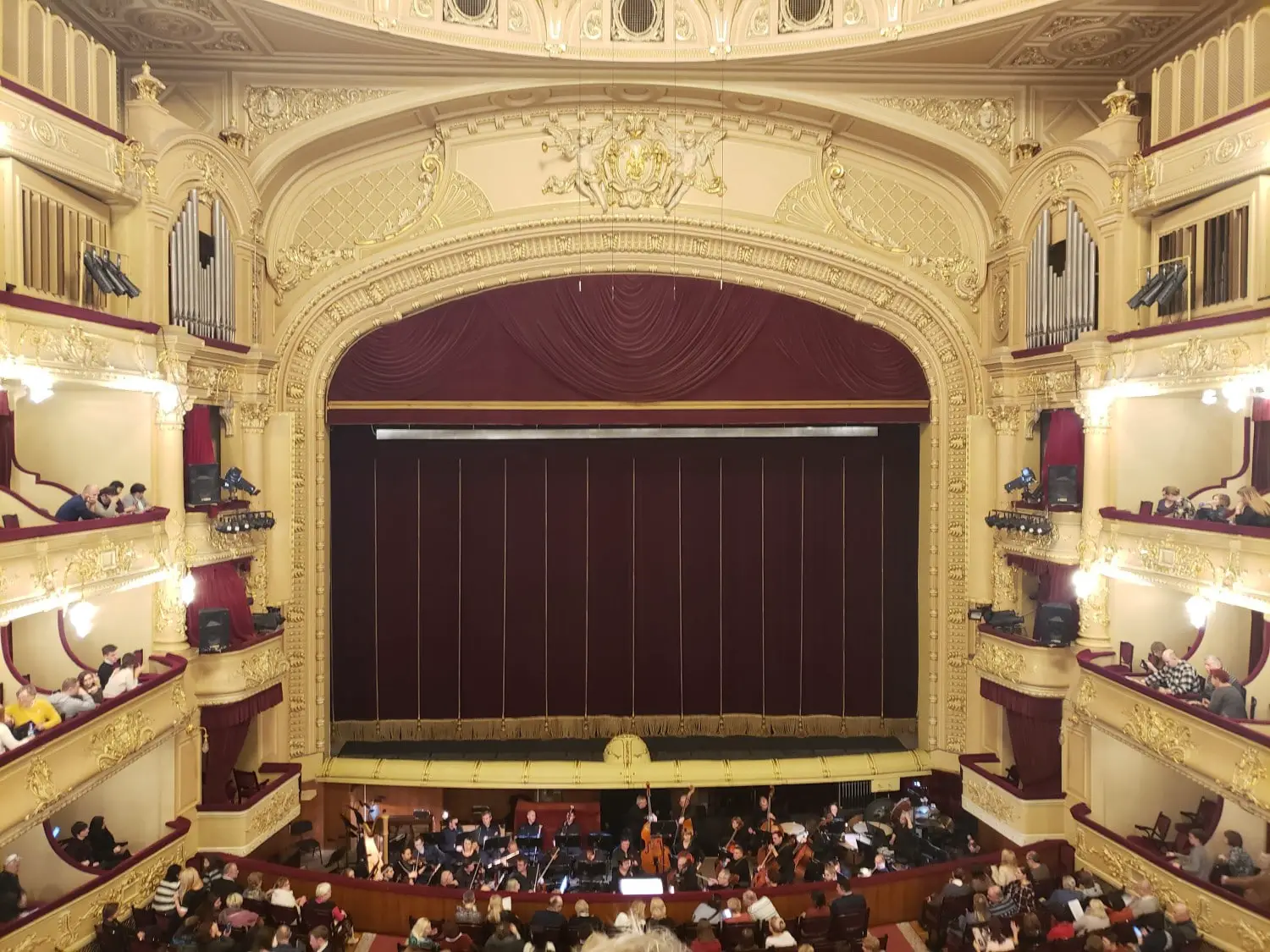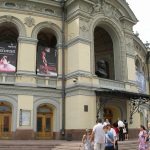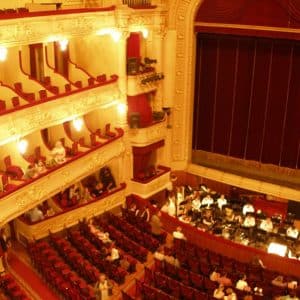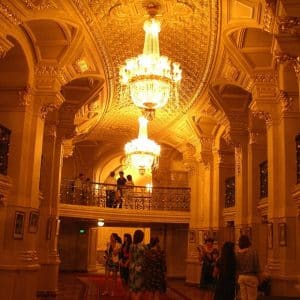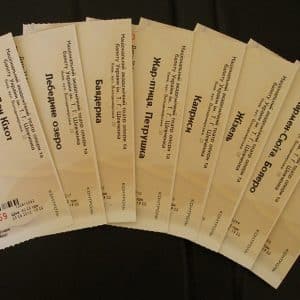The National Opera Theater of Ukraine is a gem of Ukrainian and Russian culture that houses professional ballet and opera performances in the heart of Kyiv, and it is a perfect low-cost form of entertainment and enrichment for students. Tickets can be had for literally just a few dollars. Located at Volodymyrska St., 50, just one block south of metro station Zaloti Vorota (Золоти ворота), and a few blocks away from the NovaMova International Language School, where SRAS study abroad programs are hosted, this opera house offers an elegant venue for audiences to enjoy live performances multiple times each week.
Review by Jonah Helwig, Spring 2020
Across the world and throughout history, the opera has played host to the highest classes of society. When I arrived in Kyiv, I was determined to see the extravagance of the Ukrainian National Opera House and witness a performance. I researched the prices online and discovered that an opera ticket costs 400 hryvnia or about 16 dollars. I convinced the other members of my group to accompany me and soon after, we bought our tickets online. We decided to see a performance of Aleko (Алеко). This opera was written by the great Russian composer Sergei Rachmaninoff and based on “The Gypsies,” a poem by Alexander Pushkin.
This was an extremely dramatic opera consisting of heroism, romance, and betrayal. The opera opens with a soldier saving a gypsy woman from another soldier. The gypsy woman is so grateful that she falls in love with her savior and brings him into her community. All is well until a young man captures the heart of the gypsy woman and they begin a passionate affair. The soldier eventually discovers them and unleashes his rage. The soldier unsheathes his knife and kills the young man. Filled with despair, the gypsy woman grabs the knife and tries to kill the soldier. The fight over the knife ends with the soldier plunging it into his lover’s heart. The gypsy community discovers the gruesome scene and the soldier is banished forever.
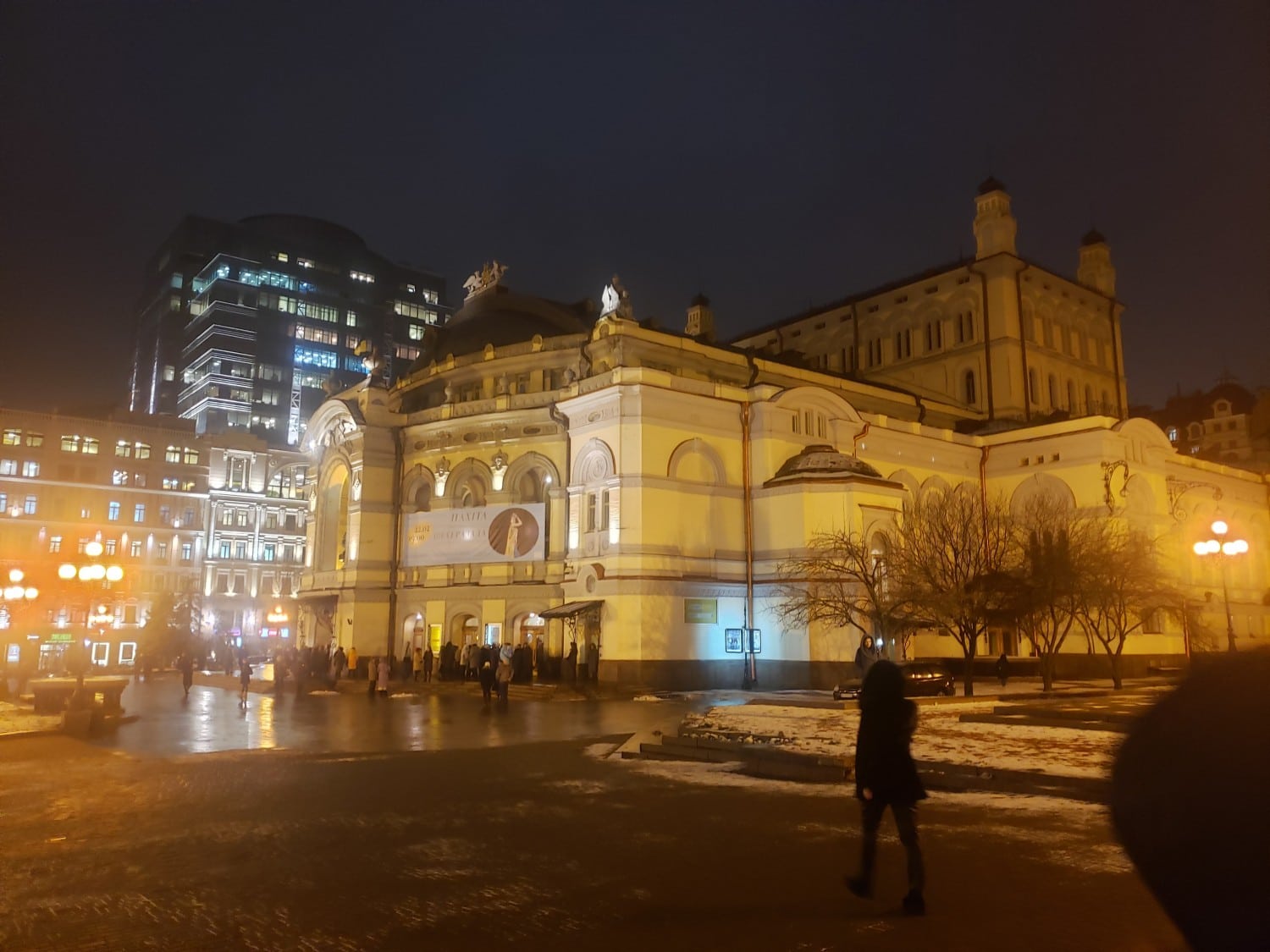
The entire performance was expertly done. The set consisted of a giant sheet that was moved up and down throughout the performance to give the impression of a changing village. The costumes were colorful and vibrant. The singers were brilliant, and the ensemble made the singing and the entire spectacle more powerful. Overall, it was a beautiful and truly an unforgettable experience; however, to my surprise, the show was not over.
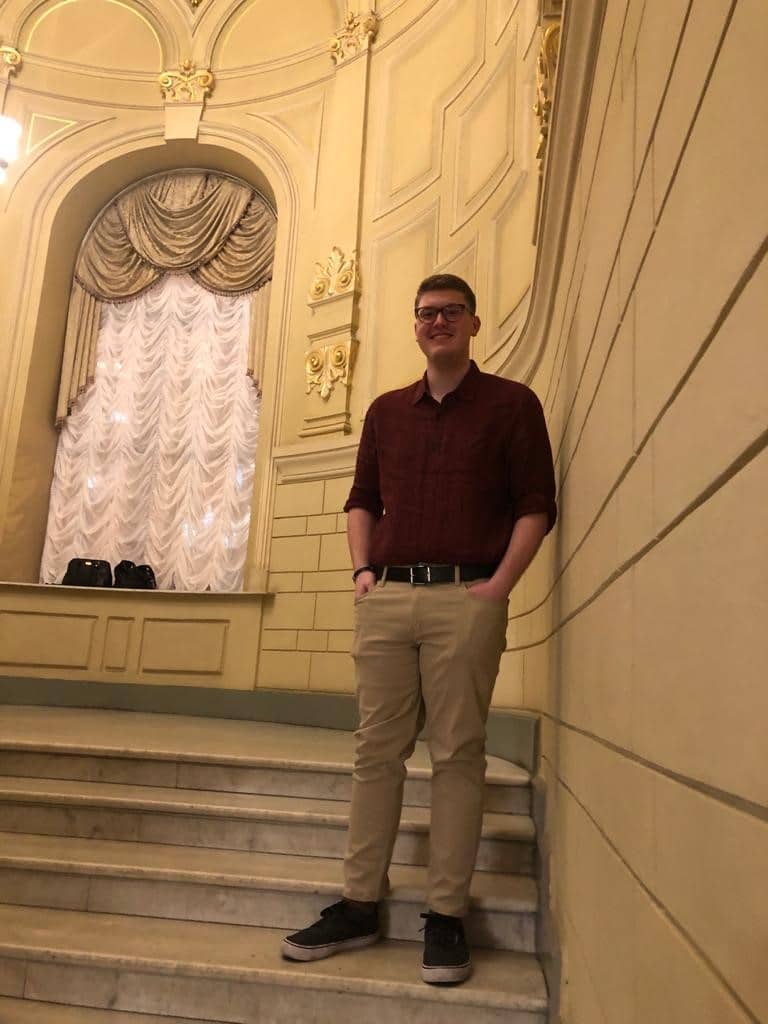
The opera ended and following intermission there was performance of a ballet that was absolutely breath taking. When I had purchased my ticket, it was in Ukrainian and I had not understood that following the opera there would be a ballet called: Bolero (Болеро). In this performance, there were three principle dancers supported by a massive ensemble. The ballet told a story of an unfaithful prince who leaves his princess for another woman. This ballet was characterized by the elaborate costumes and magnificent dancing. As the ballet progressed more and more members of the ensemble entered the stage. At the height of the performance 50-60 dancers engulfed the stage. I initially thought that this many dancers would overwhelm the performance. But to my surprise all the dancers were perfectly organized. I was amazed by the beauty of the dancing and the organization of the chaos in front of me. This truly was a most pleasant surprise and an amazing performance that I will not soon forget.
Review by Marie Forney, Summer 2013
For a student who has been engrossed with Russian ballet and music from the time I was a young child and who has completed the standard Russian “Vagonova” ballet training syllabus under the tutelage of a Ukrainian ballet mistress in America, this theater seems to be a small piece of heaven on Earth. The theater presents about four different productions each week during the performance season, which runs from the beginning of September through mid-July, and the ticket prices are nearly too good to be true. Some balcony tickets are as low as 10грн (~$2) and you can get a seat with a fantastic view for as low as 50грн (~$6).

The classic repertoire is deeply rooted in the rich local traditions, with choreography, costumes, and sets that realize the visions of the great historical Soviet and Russian artists and composers: Tchaikovsky, Stravinsky, Glinka, Mussorgsky, Prokofiev, Petipa, Minkus, Diaghilev, and Nijinsky, just to name a few. The theater also presents contemporary works (e.g. “The Intersection” and “Caprices of Fate” by Myroslav Skoryk, “Zorba The Greek” by Mikis Theodorakis, and “The Forest Song” by Mykhailo Skorulsky), expanding its repertoire to include a wide range of styles and themes. The live orchestra is fantastic, and the dancers and singers are phenomenal. They all demonstrate solid technique, refined artistry, and vibrant style, characteristic of the Russian training tradition . My years of intense study as a classical Russian ballet dancer and music conservatory student help me thoroughly appreciate the dancers’ beautifully arched feet, long body lines, and elegant technical execution, as well as the musicians’ brilliant timbres, clean mechanics, and sensitive flexibility.
The resident opera and ballet company was created in 1867 and was initially housed in the City Theater building. In addition to staging popular grand operas such as Mikhail Glinka’s “Ivan Susanin” and “Ruslan and Lyudmila,” it premiered such productions as Tchaikovsky’s “Eugene Onegin” (1889) and “The Queen of Spades” (1890). After a fire broke out and destroyed the theater in 1896, a new theater, with a new design was built, even bigger and more elaborate than before. The opera house now stands as a magnificent home to operas and ballets originating from all over the world.
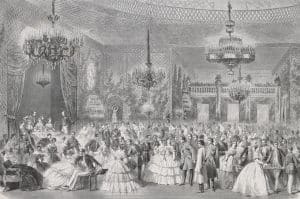
One of the things I love about the theater’s location near the metro and NovaMova language school is that I get to hear the singers’ voices streaming out windows of the opera house as they rehearse their parts, and I see ballet company dancers and students outside, walking and dancing along the streets and squares of Kyiv, with their hair in high buns and their feet turned out, toes pointing sideways. I enjoy riding on the metro with them and their large tutu bags hanging from their shoulders. It’s incredibly refreshing to see live artistic performance, grounded in tradition and appreciated for its cultural value, alive and accessible to people of all ages, backgrounds, and social classes here in Kyiv. I cannot more strongly suggest that anyone visiting Kyiv take the opportunity to enjoy the ballet or opera, or both, at least once.
Ordering tickets is fast and easy. The box office at the theater is open almost every day, and various ticket booths situated along the streets throughout downtown Kyiv also sell tickets. I’ve found that the easiest way to reserve, buy, and retrieve tickets, however, is to select and book them online at the theater’s website, and then pay for and pick them up at the theater. One precaution, though: If you’re going to purchase the lowest-cost tickets, be sure not to reserve a seat that is situated behind one of the support pillars, which are demarcated by a black square on the seating chart. These pillars can partially obstruct the view of some ticket-holders.
Otherwise, sit back, relax, and enjoy the shows!


